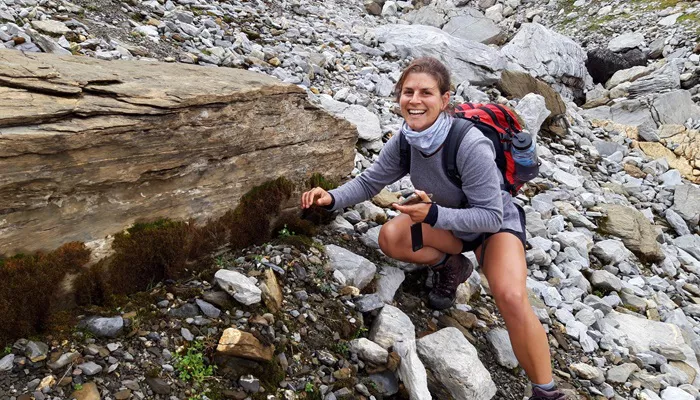Scientists Discover Genetic Adaptation in Alpine Flower, Offering Insights for Ecosystem Protection.
A team of scientists from EPFL and other research institutes has uncovered how an Alpine flower adapts its genes to survive in local habitats. This discovery could significantly impact the conservation of ecosystems facing threats from climate change.
As warmer temperatures challenge their existence, various plant species in the Alps are moving to higher altitudes. Scientists are collaborating with environmental conservation organizations to understand how these species adapt and migrate, which is essential for preserving biodiversity in Switzerland.
The research team, which includes EPFL scientists, began their investigation in 2013. They combined geographic information systems with molecular ecology, specifically landscape genomics. Their findings, published in the July issue of Evolutionary Applications, address a longstanding question in biology: at what scale does natural selection occur? The study reveals that natural selection operates at a very localized level and can differ greatly, even within the same species. This indicates that a multiscale framework is necessary for effectively observing natural selection.
Innovative Mapping Techniques
To conduct the study, researchers utilized drones and a light-detection and ranging (LiDAR) system mounted on a helicopter to create topographic models of four valleys in the Vaud Alps, achieving an unprecedented spatial resolution of 6 cm to 32 m. Concurrently, they collected samples of the Alpine rock-cress (Arabis alpina), a plant representative of the local ecosystem. This flower, which produces white blooms, thrives in rocky, sandy mountain soil and in crevices of mountain rocks. The team extracted the entire genome of the plants from each site to identify genetic variations. By combining this data with geographic information, they found significant genetic differences between the valleys based on environmental conditions such as sunlight, humidity, temperature, slope, and orientation. This illustrates how the plant adapts to its specific habitat.
Local Adaptation Strategies
Stéphane Joost, a senior scientist at EPFL’s Laboratory for Biological Geochemistry and the study’s corresponding author, noted the importance of high-resolution topographical models. “Previous studies used models with a spatial resolution of only 25-50 m, which were primarily sourced from the Swiss Federal Office of Topography. Now, for the first time, we can detect natural selection signatures at the appropriate scale,” he explained.
One key finding involves a defense mechanism used by the Alpine rock-cress to deter herbivorous insects that often dwell beneath large mountain rocks. To protect its leaves, the plant produces a sugary sap that repels these insects. Joost highlighted a significant correlation between a gene related to this defense and a measure of surface roughness calculated at a 2 m resolution. “This association is undetectable at other resolutions,” he said, emphasizing the necessity of multiscale analyses to fully understand local adaptation strategies critical for a species’ survival.
The study also emphasizes that although the samples from the four sites share a common genetic heritage, they have developed unique survival strategies tailored to their local environments, even when these habitats are in close proximity.
Predictive Models for Conservation
The computer models created by the research team can play a vital role in addressing global warming. These models can predict how regions are likely to change over time, indicating which areas may become more suitable for the Alpine rock-cress in 50 years. Additionally, the models help scientists assess the “genetic offset” of a species, measuring how much it will need to adapt if it does not migrate naturally or artificially.
The findings, published in Evolutionary Applications, stem from a long-term study funded by the Swiss National Science Foundation and conducted by EPFL in collaboration with the Swiss Federal Research Institute for Forest, Snow, and Landscape Research, the University of Neuchâtel, the University of Fribourg, and HEIG-VD School of Engineering and Management. The research also draws on PhD work by lead author Annie Guillaume while at GEOME.
Upcoming Conservation Genetics Meeting
The computer modeling approach used in this study serves as a valuable resource in conservation genetics, aiding scientists in identifying effective measures to protect regional biodiversity. To promote conservation efforts, three local organizations—Naturéum Lausanne, the Geneva Natural History Museum, and the Geneva Conservatory and Botanical Garden—along with the Universities of Lausanne and Geneva, will host this year’s European Conservation Genetics Meeting in Lausanne from August 28 to 30, 2024.


